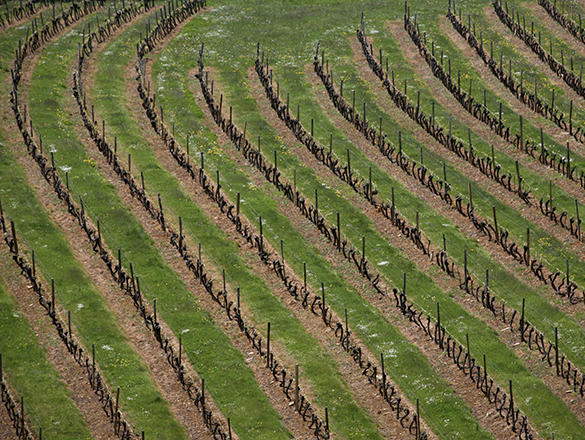
The vineyards of Bourgogne produce some great wines with a historical and international reputation. However, the region is not simply limited to its iconic appellations. In addition to its Village Premier Cru and Grand Cru AOCs, it also produces a range of wonderful Régionale and Village appellations to explore.
You will also find a full list of the Bourgogne’s Climats and lieux-dits on this page.
Check out the complete list of the 84 Bourgogne appellations.
However, your exploration has only just begun. Bourgogne wines have never before offered such high quality. Besides our range of internationally celebrated wines, try some of our lesser-known appellations where there are lots of surprises in store.
And for a fun way to find out more about the wines on offer, try out our “Which Bourgogne wine is right for me?” quiz, or check out Bourgogne Maps to take an interactive tour of the region.
Regional appellation
APPELLATIONS SUR PLUSIEURS VIGNOBLES
17 octobre 1975
Whites and rosés: main varieties Pinot Noir, Chardonnay (minimum 30%)
Secondary varieties: Gamay (20% maximum), Aligoté, Melon, Sacy.
Area under production*:
1 hectare (ha) = 10,000 m² = 24 ouvrées.
Amounts to some 2,981.64 ha approx.
The area committed to the production of Crémant de Bourgogne varies from year to year depending on local conditions.
Production is growing steadily thanks to its success with both French and foreign consumers.
Average annual production**
1 hectolitre (hl) = 100 litres = 133 bottles.
Equivalent to 163,335 hl
*In 2022 **5-year average, 2017-2021
Appellation Régionale of Bourgogne.
The appellation CRÉMANT DE BOURGOGNE is restricted to effervescent wines made from still wines (called vins de base) by the traditional method.
Producing communes:
Department of Yonne: 55 communes.
Department of Côte-d’Or: 91 communes.
Department of Saône-et-Loire: 154 communes.
Department of Rhône: 85 communes.

A wine bursting with youth and audacity. Its freshness and vigour are a matter of general agreement. Given time, it acquires the stateliness of a great wine. The brut faithfully reflects its lively and clear-cut personality. As demi-sec or sec, vivacity yields to smoothness and makes room for a new taste impression, that of sweetness.
The blanc is generally white-gold in colour. The bubbles are fine and form a delicate necklace around the edge of the glass. Floral, citrusy and mineral aromas are matched in the mouth by freshness and elegance plus a degree of acidity which is the key to a proper balance between aromatic power and the desired degree of lightness.
The blanc de blancs carries the perfume of white flowers, citrus fruits or green apples. With time, it will develop toasty notes and notes of pitted-fruits such as apricot or peach.
The blanc de noirs exhales aromas of small fruits (cherry, blackcurrant, raspberry). In the mouth, powerful, long and persistent. Time adds charm and warmth, with aromas of dried fruits and, perhaps, honey, spices or nutmeg.
The rosé, made from Pinot Noir grapes with or without a proportion of Gamay, is pink-gold in colour. This is a delicate wine with subtle aromas of red fruits.

Although Crémant de Bourgogne is a perfect pre-dinner drink, this in no way takes away from the fact that it is also a perfect accompaniment to food. The blanc chimes with main dishes such as stewed poultry with pears and dried fruits (confit de volaille aux poires et fruits secs).With the blanc de blancs, try scallops or river fish. The blanc de noirs makes a splendid match for braised oxtail or snails with potatoes (escargots en coque de pomme de terre) and is the ideal partner for poultry such as a fattened hen from La Bresse. The rosé is a sound choice as a dessert wine with its powerful floral aromas which go perfectly with ice cream and bring a touch of freshness to the close of a meal. It is ideal with pastries and its fruit scents are unbeatable with a red-fruit sorbet.
Serving temperatures: 4 to 8°C as a pre-dinner drink or dessert wine, 6 to 9°C with main meal.

Sparkling Bourgogne made its entrance into history in 1830 when it was lauded by the poet Alfred de Musset (1820-1857) in his “Secrètes pensées de Raphaël”. It was first made at the beginning of the 19th century at Chablis, Nuits-Saint-Georges, Rully and Tonnerre, and since then has not ceased to sparkle. It was for a long time the practice to make effervescent versions of prestigious Burgundian Grands Crus but the AOC status granted in 1975 laid down strict conditions for its production on the basis of meticulously-applied traditional skills to achieve high-quality vinification. Only whites and rosés qualify for the appellation. They may be blanc de blancs (from white grapes) or blanc de noirs (from white-juiced black grapes). Most are classed as brut or, less often, demi-sec. The production area is the same as that for the appellation Bourgogne.

The grapes from which the vins de base for Crémant de Bourgogne are made come from a wide variety of soils in vineyard districts throughout Bourgogne. They range from the chalky subsoil of the Joigny district in the north to the granites of southern Bourgogne, via the limestones and marls of the Côtes where most of the wines of this appellation are grown.
